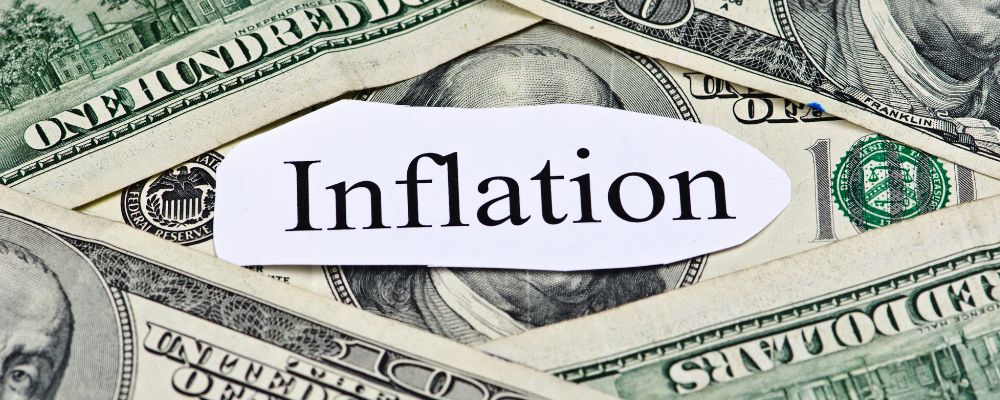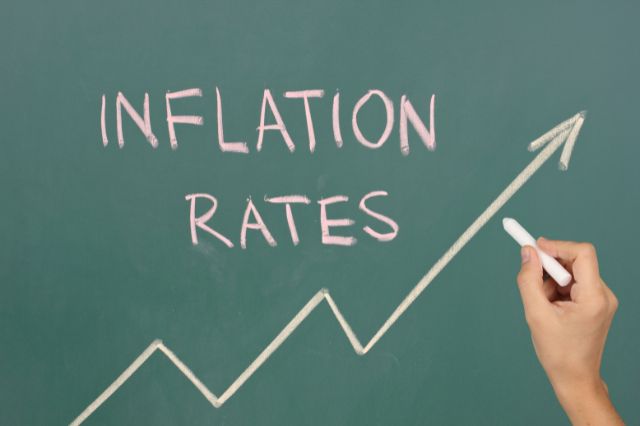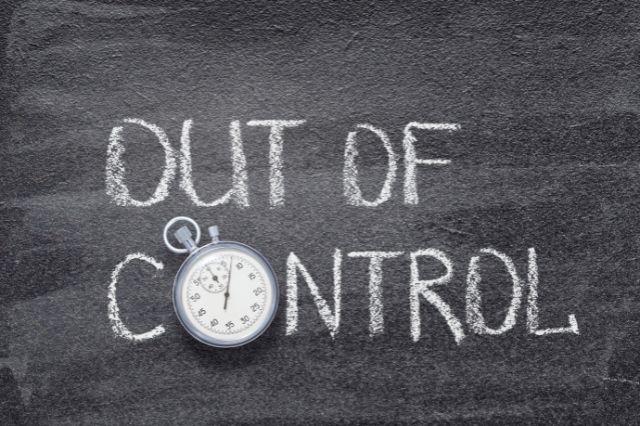|
Getting your Trinity Audio player ready...
|

By Strategic Passive Investments
Since the start of 2022, there have been a number of historic “mile markers” in the U.S. economy. For example:
- Used cars rose in price by 22.7 percent year-over-year as of May 2022.
- Gas prices jumped from $3.38/gallon (average) during the first week of January 2022 to $5.10/gallon (average) as of mid-June.
- Interest rates rose from just over 3 percent for a 30-year fixed-rate mortgage in January 2022 to nearly 6 percent at the end of June 2022.
- Perhaps most troubling of all was the issue of rising inflation, which had already been heading skyward toward the end of 2021. By May 2022, the annual inflation rate in the United States hit 8.6 percent, the highest since December 1981 and higher than even most pessimistic forecasts.
- To make matters worse, the Federal Reserve warned that in order to get inflation “under control,” it would probably continue to raise interest rates over the course of the remainder of the year.
Traditionally, most buy-and-hold real estate investors have not worried too much about inflation. After all, real estate is probably the most time-honored hedge against this issue because it performs more reliably than precious metals, the other traditional hedge, and tends to appreciate faster and on a more predictable trajectory.
ADVERTISEMENT
However, with inflation rates causing huge leaps in prices and affecting the country’s already troubled supply chain, investors need to ask themselves four important questions before they sit back and feel smug about their portfolio. Fail to consider and allow for the answers to these questions (and some of them may surprise you), and you could end up paying far more than you expected for your complacence in the face of what many economists are beginning to dub the “national emergency” of inflation.
Question 1: Am I adequately insured?
Properties have gained quite a bit of value since the pandemic began, and that is generally considered to be good news for real estate investors. If your insurance company operates like most, you probably will see the effects of this appreciation when you get your annual update about your insurance policy. In short, your rates are probably going to rise. However, there is a good chance that even your trusty insurance agent may not have factored in everything they should have when it comes to keeping your properties adequately insured.

Take a careful look at the replacement-cost estimates in your policy. You will need to consider the costs of waiting on materials as well as transporting and replacing materials in the event of damage. If you have rentals, then this is an even bigger deal because you will have to help your tenants deal with this as well. That will also cost money.
Talk to your agent and make sure your policy fully reflects the elevated costs of materials and labor and the potentially new costs of waiting an extended period of time for both.
Question 2: What is the real inflation rate?
Depending on whether an analyst is trying to play up inflation or play it down, you may hear numbers ranging from nearly 9 percent to as low as 0.3 percent. This is because when an analyst says “inflation,” they can mean several different things. For most investors and, indeed, most of the general population, the higher numbers seem far more relevant to daily life than the lower ones. However, for a Fed official trying to make it home while dodging pitchforks, the desire to insist that that April’s inflation rate was 0.6 percent is incredibly tempting.
To get lower inflation numbers in today’s economy, analysts look at core inflation rate. Core inflation rate measures exclude oil and food prices, which some analysts argue are “too volatile” to factor in. Of course, since we all eat food and use oil directly and indirectly, that volatility is highly relevant to us.
ADVERTISEMENT
Question 3: Is some inflation really “healthy,” as we are being told?
If you have been monitoring the economy for the past decade, you probably have already realized that inflation has been held to an artificially low and unrealistic level for many, many years by policymakers desperate to keep a recession away from their terms in office. This is one reason that interest rates have been so low for so long, and now the time has come to pay the piper. Most economists agree that about 2 percent inflation is good for economic growth because it spurs demand without putting too much pressure on the consumer pocketbook.

However, because inflation has been kept near zero for so long and because consumers have largely forgotten how to handle it, today’s inflation is not just rising too fast, but it is also causing a national freak-out that is actually driving other markets awry.
For example, when real estate prices become outrageous, the market usually would react by cooling. However, in today’s market, the higher the prices, the more people rush in to buy before interest rates rise or inflation prices them out. Today’s inflation is not just too much and too fast, it is also a massive market disruptor in and of itself.
Inflation has always been driven, in large part, by the expectation that things will get more expensive. Now, spending is being driven by the expectation that things will never be affordable again. That’s a big difference, and one that will affect what both renters and buyers do when it comes to obtaining housing.
Question 4: At what point will inflation spiral out of control?
In theory, a free market will eventually right itself, however painful the process, when things get too far out of hand. In today’s market, however, things are not really free. They are managed by Fed policy, local policies, government protections, IRS interference, and a vast array of other factors. As a result, it might be tempting to believe that our market will eventually slow inflation and things will calm down, but realistic investors must accept the potential outcome that inflation will spiral out of control for a very extended period of time that actually seems permanent.

Will the market eventually correct? Probably. But you do not want to be unprepared for the weirdness and potential disaster that could occur in the interim.
One of the weirdest things inflation is doing right now in terms of affecting the consumer mindset is that renters are starting to bid on their rents. While this has long been part of the equation in extremely attractive locations like Manhattan, now it is happening in many metro areas and even suburban locales including southeastern locations like Atlanta, Georgia. Essentially, when renters submit an application, they also include an offer to pay more than the going rent rate. As a result, their application is more attractive than others and they get their desired rental.
This is an example of self-fulfilling inflation because as more renters encounter this practice, more renters are finding it necessary to enact it. As an investor, you may wish to notify potential applicants that this is an option (if you choose to make it an option) and, in the worlds of one New York-area broker, “politely recommend it.”

Inflation Does Not Have to be the End of the World
For real estate investors, inflation does not have to be the end of the world even if you have not yet built up a massive portfolio to hedge against it. Just be certain that you understand what is going on with inflation and exactly how it will affect both your properties and your acquisition processes. It might be the time to change your strategy, or it might be time to ramp up operations. This can be a good time to be in real estate, but you must be willing to ask questions and then act decisively once you have answers.


